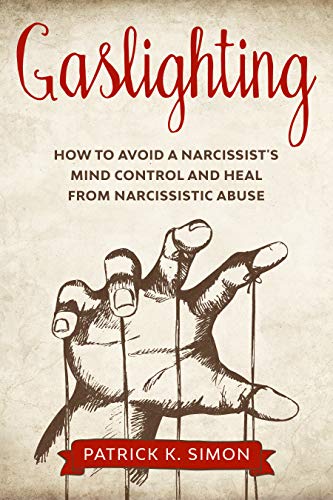Gaslighting is portrayed as a type of diligent control and mentally programming that makes the unfortunate casualty question her or himself, and at last lose her or his feeling of recognition, personality, and self-esteem.
Do you have someone in your life who keeps belittling your concerns and making you feel like your concerns about something are invalid?
Does it always feel like you are always misunderstanding him/her because any time you point out something they said, they always turn things around to make you look like you have no idea of what you are saying?
If this is where you find yourself, then you are definitely dealing with a gaslighter. A gaslighter usually wants to manipulate you by doing or saying things that will question your reality, perceptions, and memory. They will make it seem like you are always misunderstanding them or misquoting them, you are always making a mountain out of a molehill, that your concerns are not valid. You may then end up not being free to express yourself, which can negatively affect your self-esteem, and make you doubt everything about yourself.
Favorite takeaways: Gaslighting by Patrick K. Simon.
Gaslighting doesn’t require conscious plotting. Gaslighting just requires a conviction that it is satisfactory to overwrite someone else’s existence. The rest simplyhappens naturally when an individual who holds that conviction feels undermined.
Gaslighting
Gaslighting is primarily a mental intend to control a particular individual or gathering of individuals by making them question their ethics, recognitions, objectivity or approach towards things. Endeavors are made to ensure that they focused on individual beginnings accepting that either there is a significant issue with them and their convictions or they may be losing their mental soundness and going crazy.
Being gaslighted is particularly challenging to manage basically because it’s such a subtle type of misuse. The individual who gaslights you need to control you, much the same as with differentsorts of abuse. They simply don’t need you (or any other individual) to realizethey’re doing it.
Control vs Gaslighting
It’s essential to perceive that gaslighting and typical control is not the equivalent. Both will debase your confidence, yet gaslighting, when viable, will harm your trust in yourself and your experience of the real world.
A procedure that gaslighter use to control include
1.Withholding
“Retaining” is one gaslighting procedure where the abuser fakes an absence of comprehension, will not tune in and decays to share his feelings.
2.Countering
Another gaslighting procedure is “countering,” where an abuser will energetically raise doubt about an injured individual’s memory despite the unfortunate casualty having recalled things accurately.
3.Blocking and redirecting
“Blocking” and “redirecting” are gaslighting procedures whereby the abuser again changes the discussion from the topic to scrutinizing the injured individual’s con- siderations and controlling the debate.
4.Trivializing
“Trivializing” is another method for gaslighting. It includes causing the injured individual to accept their contemplations or requirements aren’t significant.
5.Forgetting and disavowal
Harsh “overlooking” and “disavowal” can likewise be types of gaslighting. In this system, the abuser claims to overlook things that have genuinely happened; the abuser may similarly deny things like guarantees that have been made that are imperative to the person in question.
Gaslighting Phases: Idealize, Devalue and Discard
The gaslighter carry on their control in 3 phases
THE IDEALIZATION STAGE:
During the underlying “romanticizing stage”, the narcissist puts on their “best face” to form their injured individual into a harmonious association with them as their narcissistic stockpile. In the start of the relationship, the narcissist gives the unfortunate casualty consideration, they are adoring, beguiling, coquettish, lively, energizing, and extraordinary amusing to be with. They give off an impression of being so glad and keen on the relationship, and the clueless unfortunate casualty appreciates each minute with their new charming accomplice. They love the way the narcissist is so flawlessly extraordinary and how they get alcoholic on life, and they also need to drink this mixture with them.
THE DEVALUATION STAGE:
The relationship has now moved into the “depreciation stage”, and it seems as though a deadly oddity mist has plunged over the connection. Practically medium- term the narcissist turns out to be definitively cold and relentless. The unfortunate casualty goes wrong is a hard one, they can’t appear to do anything right any longer; the narcissists adoring words go to analysis, everything the injured indi- vidual attempts finishes in a negative impact, and they end up downgraded every step of the way. Utterly confounded, the unfortunate casualty has no clue what’s going on, and they become progressively pushed, miserable and discouraged with the circumstance.
THE DISCARDING PHASE:
In this stage, the game reaches its last decision. What began as the romanticizing of an injured individual by the narcissist, is destined to end with the admiration of the narcissist by the unfortunate casualties over-reliance. When this occurs, the narcissist zest for the game has hosted, in their eyes, they have just won the chal- lenge, and the enjoyment is finished. At this point, the narcissist is not interested in any necessities or wishes that the injured individual may have; they never again exist in their brain.
Discontinuous Fortification
In any maltreatment cycle, it’s regular for an abuser to participate in a hot-and-cold period where they occasionally toss in scraps of warmth to keep you snared and to recharge trust in arrival to the vacation stage. This is a control strategy known as a discontinuous fortification, and an abuser needs to threaten you, just to restore the following day and act as nothing has occurred. At the point when you do review any damaging episodes, an abuser will instruct you to “let it go” so they can sup- port the cycle.
Psychological Cacophony
Numerous casualties of constant gaslighting battle with the psychological cacophony which happens when their abuser reveals to them that they never did or said something. Much like sensible uncertainty can influence a jury, even the clue that something might not have occurred after all can be sufficiently unusual to revoke somebody’s discernments.
Phases of a Gaslighting Relationship
Stage 1: Lies and Exaggerations:
When the gaslighting starts, it begins with little lies and distortions that the accomplice may very well wave off as talk or jokes. The gaslighter makes a false account about their unfortunate casualty, leaving the injured individual on the barrier.
Stage 2: Dependence Creation:
The gaslighter then gradually develops the relationship into one where the injured individual needs them more than the gaslighter needs them. This can be monetarily, inwardly, or socially; perhaps the gaslighter gets more cash flow, or the gaslighter persuades the unfortunate casualty that their relationship is the main beneficial thing in their life, or that they have no companions or family who care about them. This puts the gaslighter in a definitive seat of intensity: the ability to remove all their satisfaction if they want.
Stage 3: Wearing Out:
Through different methods and strategies, the gaslighter keeps the injured individual on edge, where the unfortunate casualty is continually asked for inquiry into their world to stay away from or deescalate pointless clashes. They start asking themselves the questions: Am I the issue? Am I wrong? Am I insane? In the long run, they become persuaded that they are.
Stage 4: Control Through Hope:
The gaslighter at long last props the relationship up by controlling it with only enough bogus would like to keep their unfortunate casualty externally upbeat. The consistent stream of intimidation and control keeps the injured individual shaky and broken, yet only enough benevolence once in a while is introduced to keep them remaining.
Triangulation
Triangulation (with regards to gaslighting) can be utilized to affirm the abuser’s adaptation of the real world and disgrace you into accepting that you genuinely are distant from everyone else in your convictions and discernments. It fills an unfortunate casualty’s feeling of estrangement when someone else (or a gathering of individuals, for example, the narcissist’s collection of mistresses) concurs with their twists.
Flying Monkeys
Dangerous narcissists are inclined to selecting what the survivor network alludes to as “flying monkeys” to concur with their point of view. They may acquire these individuals physically to affirm their perspective (“Hey Sandra, what do you think? Isn’t Laura being paranoid?”), or even notice them in passing (“Even Sandra concurred with me that you’re somewhat jumpy, Laura”).
The Most Effective Method to Disarm a Gaslighter
•Recognize one and comprehend what one is. Having this information will be useful. You’ll have the option to make a differentiation between what is ordinary and sound, and what isn’t.
•Separate exaggeration from certainty. Consider what the individual conveys on? Are guarantees vacant or does the person in question come through with them? Hold your desires under tight restraints.
•Be cautious with your language. Narcissists have low resistance for dissatisfaction and are effectively set off. To accuse the individual may trigger a fierceness. Instead of causing the individual to feel exceptional, for. example, “Would you be able to assist me with understanding this?” This will engage the individual all while ideally getting them to explain for you.
•Keep your cool. Indicating that you’re vexed will probably fortify the conduct of the narcissist. They will feel empowered by your response and keep on carrying on in manners that evoke a similar reaction by you.
•Put your needs first. If you deal with what you need first, at that point, there’s to a lesser degree a possibility of you being exploited. Know your needs and mean to satisfy them.
•Protect yourself. Remember and expect that there might be an ulterior.
Step by step instructions to Escape a Gaslighting Partner
1) Identify the circumstance: Understand that there is an issue, make sense of what the problem is, and acknowledge that it is transpiring. Nothing will change on the off chance that you don’t begin by tolerating what you have fallen into.
2) Separate certainty and fiction: Your reality has been misshaped, and you have been persuaded that positive things weren’t. Plunk down, calmly inhale, and make sense of the amount of what you accept as valid, and what amount isn’t.
3) Try to see the force battle: Gaslighting is about force, nothing else. Take a gan- der at the relationship you have with your accomplice, and perceive the force dy- namic and force battle between both of you.
4) Visualize yourself out: Escaping a gaslighting relationship implies having the option to persuade your mind that it is alright to carry on with an existence without the link. Practice mental activities where you envision what your life would be and what you would be if you didn’t have this association with you. Ensure that this perception is sure, confident, and light.
5) Start feeling once more: A long haul reaction of gaslighting is losing the capacity to trust in your intuitive sentiments. Track your emotions down the first ones that happen, not the ones you figure you ought to have, and let your mind get a handle on them. Comprehend your states of mind without the impact of your accomplice, and recollect how you used to feel about things.
6) Tell yourself it’s alright to leave: Gaslighter will in general objective people who have their buildings; individuals who can’t resist the urge to help and mend every- one around them. This is the reason you may feel so remorseful, leaving somebody that is broken. However, let yourself know: it’s alright to go. It’s an ideal opportunity to organize you.
7) Seek help: Your world is never again something you can trust. It’s an ideal opportunity to search out assistance from individuals you knew before your relationship: your loved ones. Stick onto them and enable them to assist you with re-aligning yourself with the mind you used to have.
8) Trust your sentiments more than your psyche: Gaslighter prevails by rethinking what good and evil are in their unfortunate casualty’s brain. You need to acknowledge that your mind isn’t the best spot at present, so you need to go with your gut, your affections for the present. Trust what you feel more than what you might suspect it will assist you with understand in the falsehoods your gaslighter has caused you to accept.
9) You can’t transform somebody who won’t turn: One of the last things you have to acknowledge is that if your accomplice is reluctant to turn, you can’t make them change. It’s not your obligation to alter their perspective, particularly when they would prefer not to.
10) Love yourself: Be thoughtful to yourself. Acknowledge that you have experienced considerable difficulty including an enormous measure of agony. It’s time that you fix that, and you fix that by organizing you.
All the Best in your quest to get Better. Don’t Settle: Live with Passion.



1 Comment
Pingback: 100 Books Reading Challenge 2021 – Lanre Dahunsi